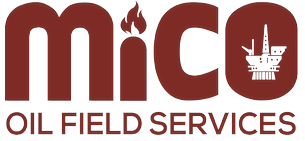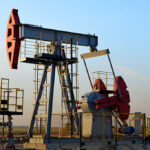The oil and gas industry stands at the brink of a technological revolution, one that promises to reshape the very foundations of how operations are conducted in the field. Traditionally reliant on manual processes and human oversight, oilfield operations have long been associated with high risks, from hazardous working conditions to unpredictable environmental factors. However, the advent of automation and smart technology is dramatically altering this landscape, introducing a new era of efficiency, safety, and precision. Automation in the oilfield encompasses a broad range of technologies, from robotics and drones to advanced data analytics and machine learning algorithms, all designed to optimize operations while reducing the reliance on human intervention. These technologies are not merely enhancing productivity but are also setting new standards for safety, ensuring that workers are shielded from the most dangerous aspects of the job. The integration of smart technology into oilfield operations is not just a matter of keeping pace with technological advancements; it is a strategic imperative for companies aiming to stay competitive in an increasingly complex and regulated industry.
Improving Safety with Automation
Automation in oilfield operations is playing a pivotal role in enhancing safety by minimizing human intervention in hazardous environments. By automating routine and dangerous tasks, companies can reduce the exposure of workers to high-risk scenarios. For instance, robotic systems and drones are increasingly being used for inspections and maintenance, allowing workers to stay out of harm’s way. Furthermore, these automated systems are equipped with advanced sensors and analytics that can detect potential issues before they escalate, ensuring timely intervention and reducing the likelihood of accidents.

Rig Monitoring and Predictive Maintenance
Smart technology has significantly improved rig monitoring through the use of IoT-enabled sensors and real-time data analytics. These systems continuously monitor the condition of equipment and infrastructure, providing valuable insights into their performance. Predictive maintenance is a key benefit of this technology, allowing for the identification of equipment that may fail soon. This proactive approach ensures that maintenance can be scheduled before a breakdown occurs, thereby preventing accidents that could arise from unexpected equipment failures.
Reducing Human Error
Human error has historically been one of the leading causes of accidents in oilfield operations. However, automation is drastically reducing the potential for such errors by taking over complex and repetitive tasks that are prone to mistakes when performed manually. For example, automated drilling systems are now capable of maintaining precise control over drilling operations, reducing the chances of errors that could lead to blowouts or other dangerous situations. Additionally, automated control systems ensure that safety protocols are consistently followed, further mitigating the risk of human error.

Case Studies on Improved Safety
Several case studies highlight the impact of automation on safety in oilfield operations. One notable example is the use of remote monitoring systems by companies like Baker Hughes, which have significantly reduced the need for personnel to be physically present in dangerous locations. These systems allow for real-time monitoring and control of operations from remote locations, ensuring that potential hazards are detected and addressed promptly. Another case study involves the use of predictive maintenance tools, which have been instrumental in preventing equipment failures that could lead to accidents.
Future of Safety Standards in Automated Oilfields
As automation continues to evolve, it is expected to set new benchmarks for safety standards in the oil and gas industry. The integration of AI and machine learning algorithms into safety systems will enable even more precise monitoring and predictive capabilities, further reducing the likelihood of accidents. Additionally, the ongoing development of autonomous systems that can operate independently of human oversight will likely lead to a future where oilfield operations are safer than ever before. Companies that invest in these technologies will not only benefit from improved safety but also from increased operational efficiency and reduced downtime.

The rise of automation and smart technology is revolutionizing oilfield operations, fundamentally reshaping safety protocols and operational efficiency. By reducing the need for human presence in hazardous environments through remote monitoring, drones, and autonomous systems, these technologies are significantly enhancing worker safety. Predictive maintenance tools powered by AI and machine learning allow for proactive equipment management, preventing accidents and minimizing downtime by addressing potential failures before they occur. As these advancements become more integrated, they are setting new safety benchmarks, enabling real-time risk assessments, and further reducing human error. In Oman successful implementation of these technologies requires continuous investment in both the technology and the training of the workforce to manage these systems effectively. The companies including MICO, Bowsher and Prolens are future of oilfield operations lies in the balance between leveraging these innovations for improved safety and maintaining operational excellence, promising a smarter, safer, and more resilient industry.









